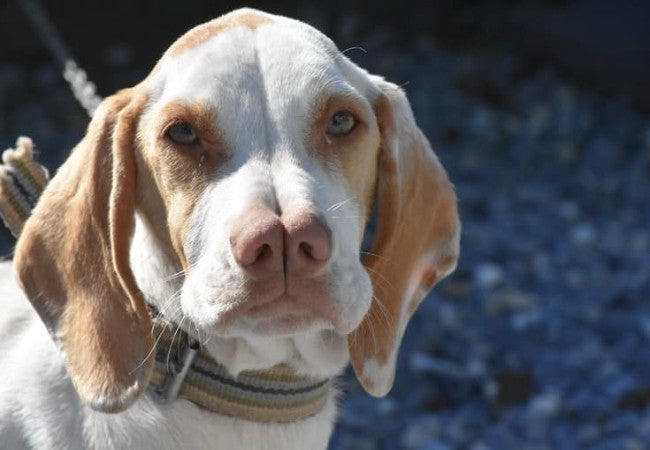A Vet’s Guide to Rare Dog Breeds 2025 🐾

In this article
A Vet’s Guide to Rare Dog Breeds 2025 🐾
By Dr. Duncan Houston BVSc
Hi there! I’m Dr Duncan Houston BVSc, veterinarian and founder of Ask A Vet. Rare breeds are fascinating—each carries distinct genetics, temperaments, and care demands often overlooked by conventional dog lovers. In this vet‑approved guide, we explore some of the rarest breeds, including their origins, health considerations, exercise needs, grooming, and whether these breeds might fit with your lifestyle. 🩺🐾
1. Norwegian Lundehund 🇳🇴
- History: Puffin hunter native to Norway with 6 toes per foot, flexible joints, and steep climbing skills.
- Temperament: Alert, playful, affectionate with family—but reserved with strangers.
- Health: Prone to protein-losing enteropathies—requires a high-quality diet and frequent vet check-ups.
- Care Tips: Provide moderate exercise, joint monitoring, limited fatty treats, and frequent fecal/blood panels.
- Vet Advice: Senior to young breeds; early screening crucial to prevent GI disease.
2. Otterhound 🌊
- History: English water dog bred for otter hunting, known for its waterproof, rough coat and webbed feet.
- Temperament: Friendly, sociable; may lack awareness of its size (up to 120 lb).
- Health: Prigly arthritis, hip dysplasia; high risk of Acanthosis nigricans dermatopathy.
- Care Tips: Need regular swimming to maintain fitness, weekly grooming, joint supplements, and sled sonar routines.
3. Chinese Crested 🧡
- History: Small, hairless breed from Chinese merchant ships; carries toothbone and delicate skin.
- Temperament: Loving, alert, excellent for apartments.
- Health: Dental problems, sunburn; needs UV protection and facial dental care.
- Care Tips: Daily sunscreen, gentle skincare, regular tooth brushing and dental checks.
4. Sloughi (Arabian Greyhound) 🏜️
- History: Ancient North African sighthound prized for hunting gazelles.
- Temperament: Loyal, dignified; thrives in warm climates.
- Health: Sensitive heart, vulnerable to anesthesia and heat exhaustion.
- Care Tips: Provide long leash trails, UF manes, and moderate-intensity exercise; heat alert in higher latitude climates.
5. Finnish Spitz 🎶
- History: Finland’s national dog —originated for bird calling; singing “bark.”
- Temperament: Cheerful, intelligent; can be wary of strangers.
- Health: Prone to pollen allergies and occasional gum sensitivity.
- Care Tips: Daily bird-chasing hikes, moderate grooming, allergen airflow, allergy-safe diets.
6. Catalburun (Double-Nose Hound) 🕵️
- History: Turkey’s rare pointer with a unique split nose for powerful scent tracking.
- Temperament: Independent, intelligent, very focused on scent tasks.
- Health: Genetic concerns: infertility, glaucoma.
- Care Tips: Mental stimulation through scent work, annual ophthalmologist exams, and breeding counsel.
7. Xoloitzcuintli (Xolo) 🧠
- History: Ancient Mesoamerican hairless breed, sacred to the Aztecs.
- Temperament: Calm, intuitive, low shedding yet sensitive to cold.
- Health: Skin infections, sensitive stomach.
- Care Tips: Moisturize naked skin, sunscreen, moderate warmth indoors, gentle dental routine.
8. Puli & Komondor (Hungarian Herding Breeds) 🪹
- History: Sheepdogs are known for their corded coats. Care-intensive dread-style maintenance.
- Temperament: Alert, intelligent, protective of family and livestock.
- Health: Hip dysplasia, skin infections under cords.
- Care Tips: Daily cord maintenance, careful drying after wet conditions, and regular docked ear checks.
9. Azawakh 🏜
- History: West African sighthound with slender build, reserved with strangers.
- Temperament: Affectionate to family, aloof to others.
- Health: Heart murmurs in breeding lines, sensitive digestion patterns.
- Care Tips: Warm sweaters, limited structured exercise, cardiac screening every 2 years.
10. Berger Picard (Picardie Shepherd) 🧭
- History: French herding dog with a rough coat and expressive ears.
- Temperament: Hard-working, affectionate with family, wary of strangers.
- Health: Rare cancer predisposition, hip/eye exams advised.
- Care Tips: Daily mental training, moderate exercise, professional grooming once or twice per year.
11. Enrichment & Tools for Rare Breeds
- Ask A Vet App: Telehealth support for rare breed care♥️ from registered specialists—growth advice, orthopedics, dermatology.
12. Suitability & Owner Readiness
- Consider genetics & potential for rare breed health issues.
- Ensure access to breed-literate vets and specialists.
- Be ready for grooming challenges and expenses.
- Assess housing/environment to meet high energy or delicate skin needs.
- Join breed-specific communities for support and education.
📌 Final Thoughts from a Vet
Rare breeds possess unmatched personality and presence—but require equally tailored care. From skin sensitivity to hidden health concerns, their needs go beyond average dog breeds. With enriched routines, dedicated veterinary oversight, these extraordinary pups can thrive—regardless of rarity. If you’re considering a rare breed journey, Ask A Vet is here for expert, specialized guidance. 🐾❤️






